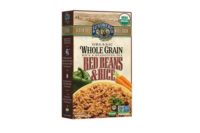Bioavailability of Antioxidants in Whole Grains
The link between whole grain consumption and the reduction of chronic disease risk is well-documented. Now, whole grains also have been shown to possess a high level of antioxidant activity.

|
| Surprising research suggests the total antioxidant activity in whole-grain wheat, oats and corn cereals surpasses that of many commonly consumed fruits and vegetables. |
The link between whole grain consumption and the reduction of chronic disease risk is well-documented. Studies show that a diet rich in whole grains could help reduce the risk of cardiovascular disease, diabetes and cancer. Whole grains also are held in high regard for their fiber, vitamin and mineral contribution.
While these attributes might be enough to secure their role in a healthy diet, whole grains also possess a high level of antioxidant activity. Best of all, the antioxidant profile of whole-grain varieties differ from, and thereby complement, antioxidants found in fruits and vegetables.
Surprisingly, the total antioxidant activity in whole-grain wheat, oats and corn cereals surpasses that of many commonly consumed fruits and vegetables. Whole grains contain carotenoids and vitamin E compounds, with the most abundant group of antioxidants being phenolics. Phenolics, as identified in the edible portion of the plant, comprise a class of hundreds of molecules with one or more aromatic rings.
These molecules occur naturally to act as self-defense for the plant against UV-light and pathogens.
Of the phenolics in whole grains, alk(en)ylresorcinols are found in high levels in wheat and rye, and ferulic acid makes up 90% of the phenolic compounds found in wheat. Avenanthramides are unique antioxidants found only in oats and have been shown to possess potent antioxidant activity. These phenolics in whole grains have stimulated increasing interest among scientists and food manufacturers, as they are believed to provide important health benefits.
The bioavailability of whole-grain phenolics is a key factor in its value. The most commonly accepted definition of bioavailability is: “The proportion of the nutrient that is digested, absorbed and metabolized through normal pathways.” Understanding the bioavailability of phenolics, or the actual concentration of the compounds in target tissues or organs, allows researchers to better assess the activity or health impact of a phenolic compound. Maximum plasma concentration; time to reach peak plasma concentration; and elimination half-life of the specific phenolic metabolites have been widely used to measure and compare bioavailability.
The bioavailability of ferulic acid, avenanthramides and alk(en)ylresorcinols in commonly consumed whole-grain cereals has recently been assessed in human studies. After consumption, wheat-bran ferulic acid and oat-bran avenanthramides showed similar time to reach peak plasma concentration and elimination half-life, but oat avenanthramides had a higher maximal plasma concentration compared with ferulic acid. This was true even when intake was lower.
In addition, as yet unpublished in vitro data show avenanthramides to possess a higher antioxidant activity compared with ferulic acid by the oxygen radical absorbance capacity (ORAC) assay. In humans, avenanthramides increase antioxidant defense by elevating superoxide dismutase activity and glutathione redox status.
The maximal plasma concentration of rye bran alkyl- and alkenylresorcinols was much higher compared with either ferulic acid or avenanthramides, and their rates of elimination were slower. But, their antioxidant activity also was much lower than ferulic acid and avenanthramides. Taken together, oat avenanthramides have both high bioavailability and in vitro antioxidant activity in comparison to ferulic acid and alk(en)ylresorcinols. This makes oats a possible unique and potent source of antioxidants in the diet. When the topic of antioxidants for health arises, it’s clear that whole grains—and oats especially—merit a front-and-center place in the line-up of superior phytochemical sources.
Looking for a reprint of this article?
From high-res PDFs to custom plaques, order your copy today!





